
Access Management Standard
Effective Date: 01 MAY 2021
Last Revised Date: 14 AUG 2020
Page 1 of 15
ACCESS MANAGEMENT STANDARD
Responsible Executive/University System Officer: Chief Information Security Officer
Responsible Office: Cybersecurity & Networking
Approved Distribution: PUBLIC
Status: IN REVIEW
1 PURPOSE
The University System of New Hampshire (USNH) is committed to promoting secure and appropriate
access to its information and information technology resources. This Standard defines the baseline
security controls designed to minimize the potential for unauthorized access to or use of information
technology resources and the information they contain and to preserve and protect the confidentiality,
integrity, and availability of USNH information and information technology resources.
2 SCOPE
This Standard applies to all administrative, academic, and business units at USNH and its component
institutions. The requirements documented here apply to all information technology resources that
capture, store, process, transmit, or otherwise manage institutional information.
3 AUDIENCE
All USNH community members, including but not limited to applicants, faculty, staff, students, prior
students/alumni, and emeriti of all USNH institutions should be familiar with the specifics of this
Standard.
4 STANDARD
COMMUNITY MEMBER RESPONSIBILITIES
All USNH community members are responsible for all actions carried out using any account associated
with a USNH information technology resource issued for their use. As such, account holders shall take
all reasonable actions to safeguard institutional information and USNH information technology
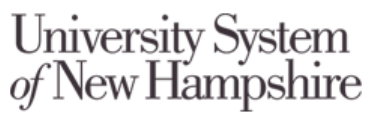
Access Management Standard
Effective Date: 01 MAY 2021
Last Revised Date: 14 AUG 2020
Page 2 of 15
resources by protecting their accounts from unauthorized use and compromise, including, but not
limited to, the following:
• Completing all cybersecurity training required for their role
• Creating passwords that comply with the USNH Password Policy and maintaining the
confidentiality of those passwords for all USNH accounts under their control
• Securing workstations and mobile devices by engaging the screen lock before leaving them
unattended
• Taking care not to misuse their USNH accounts. Examples of misuse include, but are not limited
to:
o Using access granted to view or modify information they are not authorized to view or
modify
o Allowing anyone else to access information or resources, which includes providing
access to parents, spouses, children, or any other relatives for any purpose, even to
perform actions on their behalf
o Using anyone else’s USNH account to gain access to information or resources they are
not authorized to access
MANAGER RESPONSIBILITIES
Managers of USNH employees, including students, are responsible for notifying Enterprise Technology &
Services (ET&S) when individuals change jobs from one part of the University System (or one of its
component institutions) to another. This ensures that an access review can be completed, and
modifications can be made so that each individual has access to only those information technology
resources appropriate for their role(s).
ACCESS MANAGEMENT OVERVIEW
Access to information technology resources and the institutional information those resources capture,
store, process, transmit, or otherwise manage shall be granted based on business need and the concept
of least privilege. This means that USNH community members shall only be granted access to those
information technology resources, and information required to fulfill their responsibilities.
Access to most USNH and component institution information and information technology resources
requires three things.
First, an identifier associated with a valid USNH identity, an accepted federated identity, or an
identity established for the purposes of collaboration on a specific information technology
resource.
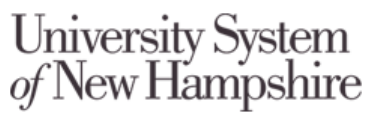
Access Management Standard
Effective Date: 01 MAY 2021
Last Revised Date: 14 AUG 2020
Page 3 of 15
Second, those with a valid identifier must be able to prove who they are through the process of
authentication.
Third, the authenticated identity must be authorized to access the information technology
resource or information they are trying to access. This is handled through the establishment of
an account or other authorizing mechanism.
IDENTITY
An identity is a set of physical and behavioral characteristics by which an individual entity is uniquely
recognizable. Access to USNH information technology resources is generally associated with a primary
USNH identity. Access may also be granted using other types of identities, including federated identities
or local identities, established on a specific information technology resource (e.g., to support research
collaboration). An identity is represented by one or more identifiers, most commonly a username.
To access a USNH information technology resource, authorized individuals shall provide the USNH
identifier assigned to them for the purpose of accessing that resource.
Additional Information about USNH identities and identifiers is provided in the Identity Management
Standard.
AUTHENTICATION
Authentication is the process an information technology resource uses to confirm that a USNH
community member, authorized user, device, or other information technology resource is who or what
it is claiming to be. Access to any USNH information technology resource that captures, stores,
processes, transmits, or otherwise manages institutional information that is classified as anything other
than PUBLIC shall require authentication.
Standard Authentication
There are three different factors that can be used to confirm that someone or something is who they
claim to be:
• Something you know – a password, an answer to a secret question, or a PIN number are all
examples of this kind of factor
• Something you have – an application on your phone, an electronic certificate installed on a
device, or a physical key that plugs into your device are all examples of this kind of factor
• Something you are – biometrics like a fingerprint, facial recognition, or a retinal scan are all
exampled of this kind of factor

Access Management Standard
Effective Date: 01 MAY 2021
Last Revised Date: 14 AUG 2020
Page 4 of 15
To authenticate, USNH community members or the devices they are using shall provide a confirmed
USNH identifier and the requested factors. The factor(s) provided must match the factor(s) associated
with that identifier within the USNH resource. Commonly used methods of authentication include
username & password, biometrics, and device certificate.
Multifactor Authentication
There are some information technology resources at USNH that require an additional level of protection
to authenticate USNH community members. In these cases, multifactor authentication (MFA), which
requires that USNH community members provide 2 different factors from the list above, shall be used.
Central Authentication
Authentication services can be handled, using a central repository of identifiers and authentication
factors. This type of authentication can be used to authenticate USNH community members across
multiple information technology resources using the same identifier/authentication factor set.
A centrally managed account is created and managed in a central directory, allowing it to be used to
access many information technology resources. These accounts use a single set of credentials (e.g.,
USNH username associated with a USNH identity and the password paired with that username) to
access many information technology resources.
Central authentication services can provide both standard authentication and MFA, and is the
mechanism used to provide single sign on (SSO) capabilities. This is the preferred method for
authenticating USNH community members and shall be used wherever it is technically possible to do so.
Local Authentication
In some cases, information technology resources require local authentication, which means USNH
community members need a set of credentials (e.g., username and password) that are different from a
community member's centrally managed USNH credentials and that are only used to access that
resource. Local authentication uses locally managed accounts, which are created in local repositories
within a specific computer, device, or application, to enable access. In cases where local authentication
must be used, USNH community members shall not use their USNH password as their authentication
factor.
Each information technology resource that uses a locally managed account shall have separate
credentials that are only used to access that resource. Use of local application accounts must adhere to
the requirements outlined in the relevant Standards.
Administrators of information technology resources that must use local authentication shall, whenever
possible, utilize USNH usernames as the authentication identifier or instruct USNH community members
to use their USNH username as the authentication identifier/username for that application.
Additionally, per the requirements in the USNH Password Policy, application administrators shall instruct
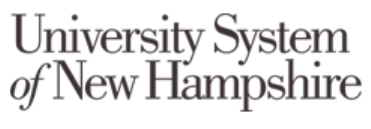
Access Management Standard
Effective Date: 01 MAY 2021
Last Revised Date: 14 AUG 2020
Page 5 of 15
and encourage USNH community members not to reuse their USNH password as the password in any
locally authenticated information technology resource.
AUTHORIZATION
Authorization is the third element that is required when accessing USNH information and information
technology resources. Where identity confirmation and authentication are used to determine and
confirm the USNH community member’s identity, authorization defines what that community member
can access, as well as what they can do with that access.
Authorization can occur on several different levels.
A USNH community member can be authorized to access an information technology resource, which is
usually done with an account. The account pairs credentials with a set of permissions, which are the
specific instructions defining what that account is authorized to do. When a USNH community member
has an account for a resource, they are authorized to access it. For some information technology
resources, this is the only level of authorization required, USNH community members either have access
or they don’t.
However, most information technology resources use multiple levels of authorization in order to ensure
that each community member only has access to the information and functionality necessary. This
structured authorization is called the principle of least privilege. To ensure each USNH community
member is only able to access what they need to, specific authorizations, also called permissions, are
associated with each account. The permissions granted to an account determines what information that
account can access and what functions it can perform.
Permissions can also be grouped into roles which simplifies management of access for groups of USNH
community members that need the same level of access. Roles used for authorization can be coarse-
grained, like those defined in the Identity Management Standard, but they can also be fine-grained or
information resource specific.
To demonstrate, if the information technology resource was a house, having an account, the first level
of authorization, allows a USNH community member to come through the front door but the other
levels of authorization, organized by permissions or roles, determine where that community member
can go, what they see, and what they can do once they are inside.
Least Privilege
Authorization to access USNH or component institution information and information technology
resources shall be based on job function, responsibilities, and/or need-to-know according to the
principle of least privilege. Individual USNH community members, groups of USNH community
members, and roles shall only be authorized to access the information and functionality necessary for
the work to be performed or access needed, and no more.
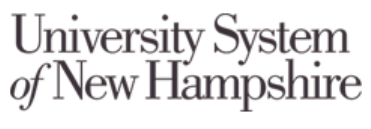
Access Management Standard
Effective Date: 01 MAY 2021
Last Revised Date: 14 AUG 2020
Page 6 of 15
ACCESS PROVISIONING
Any information technology resource that captures, stores, processes, transmits, or otherwise manages
PROTECTED, RESTRICTED, or CONFIDENTIAL information per the USNH Information Classification Policy
shall have documented access management procedures that meet the minimum requirements outlined
in this Standard.
Gaining access to information and information technology resources is done is several ways, as outlined
below.
Birthright Access
There is a level of role-based access provided to all USNH community members as soon as their USNH
credentials are established. This is called birthright access. Birthright access is coarse-grained role-
based, which means it differs based on the active roles associated with the community member’s
primary identity – an employee’s birthright access is different than the birthright access for students.
Birthright access changes when the active coarse-grained roles change, ensuring that birthright access
also follows the principle of least privilege.
Cybersecurity Ops, Engineering, & IAM, in collaboration with the necessary Business Application and/or
Technology Service Owners, is responsible for defining the appropriate access for each established
USNH coarse-grained role. This team is also responsible for the processes, procedures, and tools
required to provision, deprovision, and modify access for all USNH coarse-grained roles. Birthright
access authorization within each individual application is the responsibility of the Business Application
and/or Technology Service Owners, of that application.
Fine-Grained Role Based Access
Fine-grained role-based access builds upon Birthright Access, granting access based on user
characteristics or attributes. Examples of these attributes are which college a community member
belongs to, which class a student is taking, or the department where a community member works.
Request/Approval Access
Access to some USNH information and information technology resources cannot be granted at the
coarse-grained or fine-grained role level. In these cases, access is granted on a request/approval basis.
To gain access to these USNH information technology resources and the information those resources
support, an individual request for that USNH community member shall be made using the designated
USNH or institutional process for that resource.
Privileged Access
There are also circumstances where a USNH community member needs an authorization level that
allows them to modify the information technology resource itself or the information captured, stored,
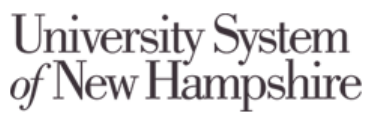
Access Management Standard
Effective Date: 01 MAY 2021
Last Revised Date: 14 AUG 2020
Page 7 of 15
processed, transmitted, or otherwise managed by that resource, rather than simply utilizing it. This
level of authorization is called privileged access. Definitions, requirements, and security access controls
related to this type of authorization are documented in the Privileged Access Management Standard.
Sponsored Access
Access to most USNH information technology resources requires that a USNH community member have
a USNH identity AND an active coarse-grained role. When there is a need to provide access to an
individual who lacks an active, coarse-grained role (e.g., to provide access for a contractor or vendor),
that access shall be authorized under the Sponsored Use program. Definitions and information about
Sponsored Use and sponsored access are documented in the Sponsored/Guest Access Management
Standard.
ACCESS MANAGEMENT RESPONSIBILITIES
All administrative, academic, and business units engaged in provisioning, modifying, deprovisioning,
and/or managing access shall develop processes and procedures, and implement tools to enable those
processes and procedures, that meet the requirements defined below.
Birthright Access
• Requests to add a new information technology resource authorization to birthright access shall
be sent to Cybersecurity Ops, Engineering, & IAM
• This team, with the oversight of the Chief Information Security Officer (CISO), has the authority
to add authorizations to birthright access and to remove them
• Any request to add an authorization for an information technology resource or resources to the
birthright access for a coarse-grained role shall include documentation that explicitly lists the
authorizations included for all USNH community members within a coarse-grained role or across
coarse-grained roles, as appropriate
o For example, adding something like the learning management system to birthright
access for Faculty would require a detailed explanation of what information and
functionality within the learning management system each faculty member is
automatically authorized to access
• This documentation shall be included in the access management processes and procedures for
that information technology resource and reviewed, annually, as part of the mandatory annual
review of access management documentation
Fine-Grained Role Access
• Requests to add a new information technology resource authorization using fine-grained roles
shall be sent to Cybersecurity Ops, Engineering, & IAM
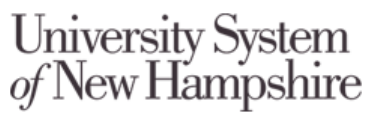
Access Management Standard
Effective Date: 01 MAY 2021
Last Revised Date: 14 AUG 2020
Page 8 of 15
• This team has the authority to add authorizations to fine-grained role-based access and to
remove them
• Any request to add an authorization for an information technology resource or resources using
fine-grained role-based access shall include documentation that explicitly lists the authorizations
included for each fine-grained role
• This documentation shall be included in the access management processes and procedures for
that information technology resource and reviewed, annually, as part of the mandatory annual
review of access management documentation
Access Request and Approval
• There shall be a defined method for USNH community members to request access, notify
administrators of a change to access, and request access be removed for each information
technology resource that requires authorization
• There shall be an approval process that involves either the service owner of that resource or the
data stewards (or their designee) for the information contained on it or accessed through it
• Use of central authentication shall be pursued whenever possible
• Use of role-based authorization schemes over individual authorizations shall be pursued
whenever possible
• Access shall be granted at the most granular authorization level possible
• Access shall not be granted to any USNH or component institution information or information
technology resource until the required approvals are complete
• An audit trail that contains the details of the request and that documents all required approvals
shall be preserved as outlined in the Access Management Audit section of this Standard
• Account approvals shall be retained until the next access audit, as defined below, is performed
for that resource
Modifications to Access
When formal notification of a requirement to modify a community member's access is received,
modification will be made first by resetting that user's access to only provide Birthright Access based on
coarse-grained role and any appropriate fine-grained role-based access. This process may involve a
review of existing access to determine the optimal approach to ensuring appropriate access is
maintained. Any access based on a request/approval process will need to be reauthorized per the
regular process.
Deprovisioning Access
Loss of a specific coarse-grained role and/or attributes that enable fine-grained role-based access shall
result in deprovisioning of any access automatically granted based on those roles. Deprovisioning
requirements for request/approval-based access are defined in the Accounts Management Standard.
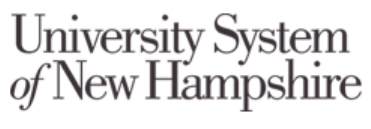
Access Management Standard
Effective Date: 01 MAY 2021
Last Revised Date: 14 AUG 2020
Page 9 of 15
PHYSICAL ACCESS TO USNH INFORMATION AND INFORMATION TECHNOLOGY
RESOURCES
Physical access to USNH information technology resources used to capture, store, process, transmit, or
otherwise manage institutional information classified other than PUBLIC shall be limited to USNH
community members who have a need to access them as determined by job responsibilities. Access to
the facilities where those resources reside shall be restricted according to the requirements provided in
the Physical Information Technology Asset Access and Management Standard and the Data Center
Facility Security, Access, and Use Standard.
COMPROMISED ACCESS
Access to USNH information and information technology resources is considered compromised when
there is reason to suspect that an unauthorized party or parties has obtained the necessary credentials
to access any USNH information technology resources the USNH community member is authorized to
access. Upon identification of a compromised account, all centrally managed access authorizations shall
be secured until the identity of the USNH community member can be confirmed and the password
associated with their USNH username can be changed.
Securing a USNH community member’s access temporarily blocks the ability to use that access for any
information technology resources that use centrally managed accounts for access.
LOCAL APPLICATION DEVELOPMENT
Applications that are developed by USNH community members for use at USNH or its component
institutions shall be designed to support the requirements provided in this Standard as well as those
defined in the System Acquisition, Development, and Maintenance Lifecycle Standard.
SPECIAL ACCESS MANAGEMENT CONSIDERATIONS
Emeriti Faculty
Access for faculty members who have been granted emeritus status by a University President shall be
retained to the level appropriate with their contributions and status for the duration of their lives. As
with all USNH access, access granted to Emeriti is intended only for use by the individual with Emeritus
status. USNH credentials used to access USNH resources cannot be shared with or used by any other
individual.

Access Management Standard
Effective Date: 01 MAY 2021
Last Revised Date: 14 AUG 2020
Page 10 of 15
Revocation of Access
Human Resources (USNH or institutional), Cybersecurity & Networking (CS&N), and the USNH General
Counsel’s Office (GCO) are authorized to revoke access temporarily or permanently to USNH and
institutional information and information technology resources, including Birthright Access
authorization.
In circumstances where this is warranted, a confidential request will be submitted in writing to CS&N.
Requests from Human Resources and the USNH GCO do not require additional approval.
Requests initiating within CS&N require approval by a member of the CS&N management team (CISO
and Direct Reports). Documentation of the request, and where required, any approvals, shall be stored
confidentially according to procedures defined by Cybersecurity Ops, Engineering, & IAM, which is part
of CS&N.
ACCESS MANAGEMENT AUDITING
Annual Access Audit
The Technology Service Owner or Business Application Owner of each information technology resource
that requires authorization/accounts is responsible for conducting an annual audit of all access to that
resource. The purpose of this audit is to confirm that all USNH community members who have access
to the resource, should have access to the resource and that the access each USNH community member
has is appropriate for that USNH community member. Timing of these audits should consider academic
or administrative calendar implications (e.g., R+30) and should be done around the same time each
year.
An access audit report, which shall include the identities of each authorized USNH community member
and a description of their authorizations, shall be created during this audit. Senior management of the
administrative, academic, or business unit responsible for managing that access shall sign-off on the
finalized access audit report. This sign-off confirms that the USNH community members and
authorization levels listed on the report have been confirmed and are appropriate and valid based on
the USNH community member’s job function and the organization’s business needs.
This report, along with a list of the identity and authorizations for any USNH community member whose
access was deemed inappropriate as a result of this audit shall be provided to Cybersecurity Ops,
Engineering, & IAM for review and audit tracking.
Cybersecurity Ops, Engineering, & IAM is responsible for reviewing all inappropriate access lists
resulting from access management audits and determining if any additional investigation is required.
Cybersecurity Ops, Engineering, & IAM is also responsible for maintaining records related to these
access management audits for a period of 18 months.
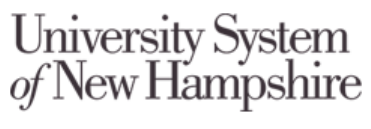
Access Management Standard
Effective Date: 01 MAY 2021
Last Revised Date: 14 AUG 2020
Page 11 of 15
Access Management Processes and Procedures Assessment and Audit
At the discretion of the CISO, the access management processes and procedures used by any unit at any
USNH institution can be assessed by Cybersecurity Governance, Risk, & Compliance (GRC) to ensure
that those processes and procedures include all required security controls. This assessment shall also
confirm that all aspects of those processes and procedures are being followed as documented and that
an appropriate audit trail is being maintained, including, but not limited to the following:
• A documented request for every account that is manually created
• A documented approval and justification for each account request that requires approval
• Confirmation that every account is held by a USNH community member who is still at the
institution
• Confirmation that every account is held by a USNH community member with an appropriate
coarse-grained role for the access provided
• Confirmation that the account holder’s job function still requires the granted access
Additionally, USNH Internal Audit may perform informal or formal access management audits, as
needed, on any USNH or component institution information technology resource.
Situations that are not covered by this Standard or where there is question about whether an
employee's account or access rights should be changed or terminated shall be brought to the attention
of the CISO for guidance.
5 MAINTENANCE OF PROCESSES AND PROCEDURES RELATED TO
THIS STANDARD
As part of the mandatory annual review of this Standard required by the USNH Cybersecurity Policy, the
processes and procedures that support the requirements defined in this Standard shall be reviewed, and
where needed, updated to ensure currency and continuous improvement.
6 ENFORCEMENT
Failure to comply with this Standard puts the University System, its component institutions, and its
information and information technology resources at risk and may result in disciplinary action.
Disciplinary procedures shall be appropriate for the individual responsible for non-compliance (e.g.,
students, faculty, staff, vendors) as outlined in the relevant institutional regulations for that individual
(e.g., student conduct and/or applicable personnel policies).
Non-compliant technology and/or activities may be mitigated as deemed necessary by the CISO and/or
CIO.

Access Management Standard
Effective Date: 01 MAY 2021
Last Revised Date: 14 AUG 2020
Page 12 of 15
Employees who are members of institutionally recognized bargaining units are covered by the
disciplinary provisions set forth in the agreement for their bargaining units.
7 EXCEPTIONS
Requests for exceptions to this Standard shall be submitted and approved according to the
requirements provided in the Cybersecurity Exception Standard.
8 ROLES AND RESPONSIBILITIES
Administrative, Academic, or Business Unit Leadership:
• Signoff on annual access audits
• Notify Cybersecurity Ops, Engineering, & IAM when an employee changes jobs to ensure access
is audited and modified appropriately
Chief Information Security Officer (CISO):
• Review all access management processes and procedures
• Direct completion of access management audits
• Request out of band access audits
Cybersecurity Governance, Risk, & Compliance (GRC):
• Assess all access management processes, procedures, and tools to ensure appropriate security
controls are in place and being followed
Cybersecurity Ops, Engineering, & IAM:
• Define the appropriate birthright access for each established USNH coarse-grained role in
collaboration with the necessary data steward
• Manage processes, procedures, and tools required to automatically provision, deprovision, and
modify birthright access for all USNH coarse-grained roles
• Secure compromised accounts
• Review all inappropriate access lists resulting from access management audits and determining
if any additional investigation is required
• Maintain access management audit records for a period of 18 months
Technology Service Owners/Business Application Owners:
• Define, document, and manage the access management processes, procedures, and tools
required to provision, deprovision, and modify access to information technology resources

Access Management Standard
Effective Date: 01 MAY 2021
Last Revised Date: 14 AUG 2020
Page 13 of 15
• Conduct an annual audit of all access to information technology resources
• Instruct community members not to use their USNH username or the password associated with
their centrally managed USNH account for any locally managed accounts
USNH Community Member:
• Complete all cybersecurity training requirements for their role
• Create passwords that comply with the USNH Password Policy
• Maintain the confidentiality of all account passwords
• Use USNH accounts appropriately
• Secure workstations and mobile devices by engaging the screen lock before leaving them
unattended
9 DEFINITIONS
See the ET&S Policy & Standard Glossary for full definitions of each term.
• Access
• Access Control
• Account
• Administrator
• Authentication
• Authentication Factor
• Authorization
• Availability
• Birthright access
• Business Application Owner
• Central Authentication
• Centrally Managed Account
• Coarse-grained Role
• Compromised Account
• CONFIDENTIAL Information
• Confidentiality
• Credentials
• Data Steward
• Deprovision
• Exception
• Fine-grained Role
• Identifier
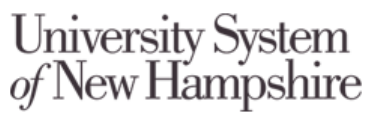
Access Management Standard
Effective Date: 01 MAY 2021
Last Revised Date: 14 AUG 2020
Page 14 of 15
• Identity
• Information
• Information Technology Resource
• Institutional Information
• Integrity
• Least Privilege
• Local Authentication
• Locally Managed Account
• Multi-Factor Authentication
• Out of Band
• Password
• Phishing
• Policy
• Privileged Access
• PROTECTED Information
• Provisioning
• RESTRICTED Information
• Security Control
• Service Account
• Single Sign On (SSO)
• Standard
• Technology Service Owner
• Username
• USNH Community Member
• USNH ID
10 RELATED POLICIES AND STANDARDS
• USNH Cybersecurity Policy
• USNH Information Classification Policy
• USNH Password Policy
• Account Management Standard
• Application Administration Standard
• Cybersecurity Exception Standard
• Data Center Facility Security, Access, and Use Standard
• Identity Management Standard
• Physical Information Technology Asset Access and Management Standard
• Privileged Access Management Standard

Access Management Standard
Effective Date: 01 MAY 2021
Last Revised Date: 14 AUG 2020
Page 15 of 15
• Remote Access and VPN Standard
• Sponsored/Guest Access Management Standard
• System Acquisition, Development, and Maintenance Lifecycle Standard
CONTACT INFORMATION
For USNH community members: Questions about this Standard, requests for additional information or
training, or reports of violations can be directed to Cybersecurity Governance, Risk, and Compliance
(GRC) via this Support Form.
All other requests can be submitted here: Submit an IT Question.
DOCUMENT HISTORY
Effective Date:
01 MAY 2021
Approved by:
CHIEF INFORMATION SECURITY OFFICER, D STOCKMAN, 02 SEP 2020 V1
CYBERSECURITY POLICY & STANDARD WORKING GROUP, 13 AUG 2020, V0.2
Reviewed by:
CHIEF INFORMATION SECURITY OFFICER, D STOCKMAN, 27 JAN 2021
CYBERSECURITY POLICY & STANDARD WORKING GROUP, 13 AUG 2020, V0.2
Revision History:
REVISED PER CYBERSECURITY POLICY & STANDARD WORKING GROUP REVIEW, 12 AUG
2020, V0.2
REVIEW DRAFT FINALIZED, R BOYCE-WERNER, 08 MAR 2020, V0.1
